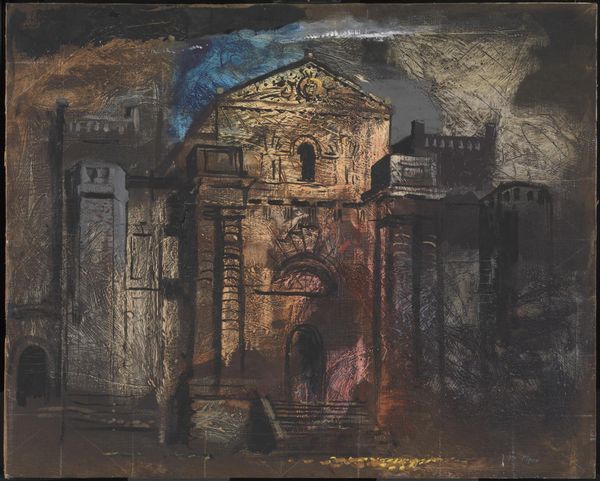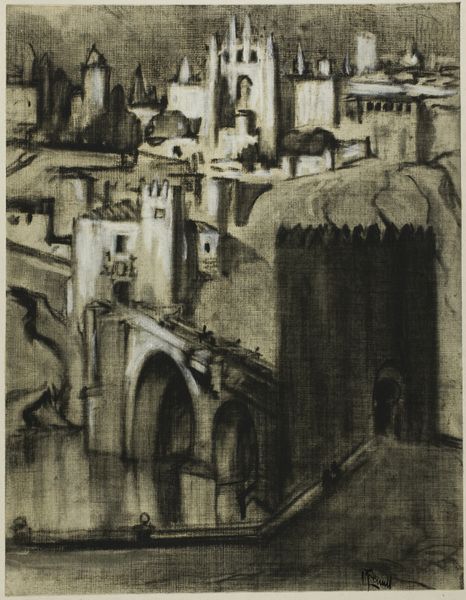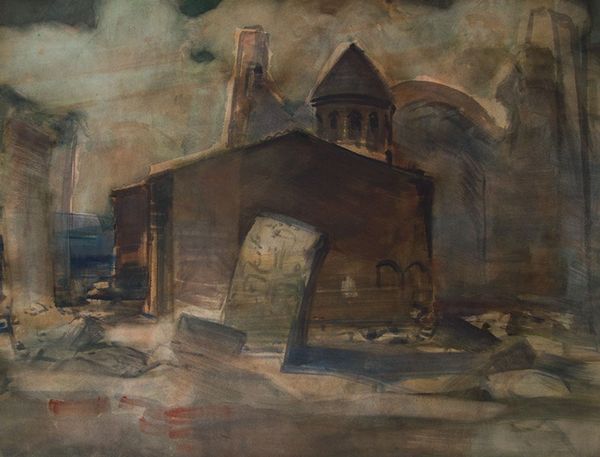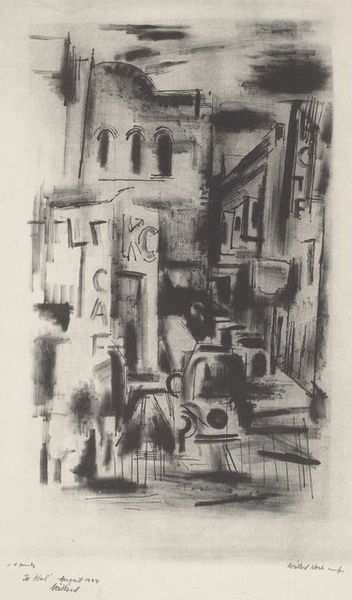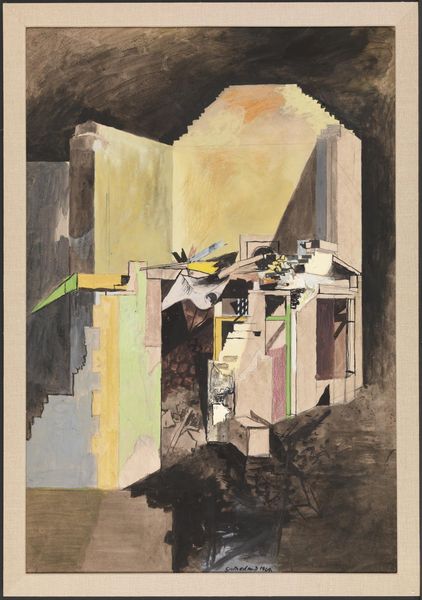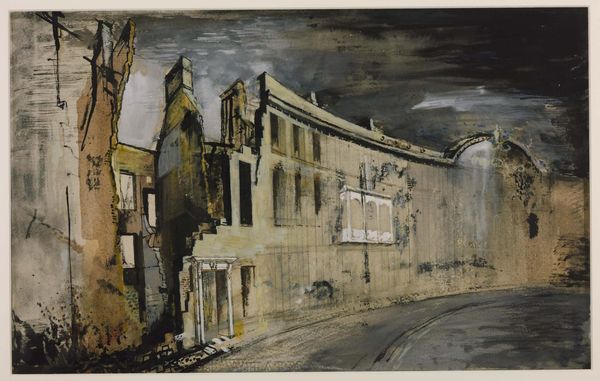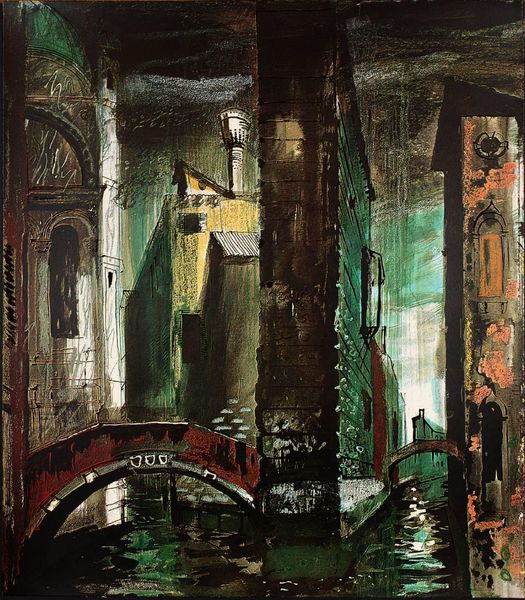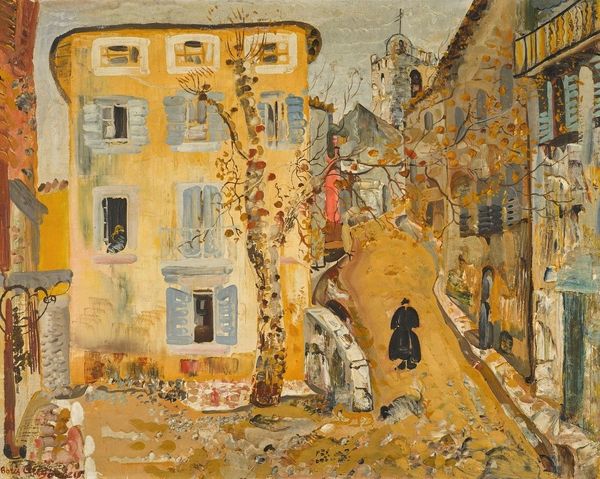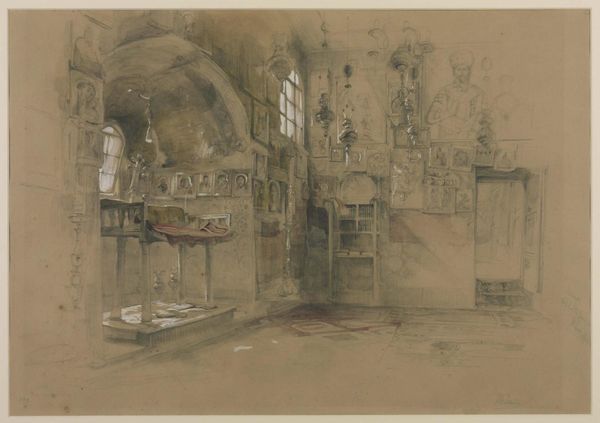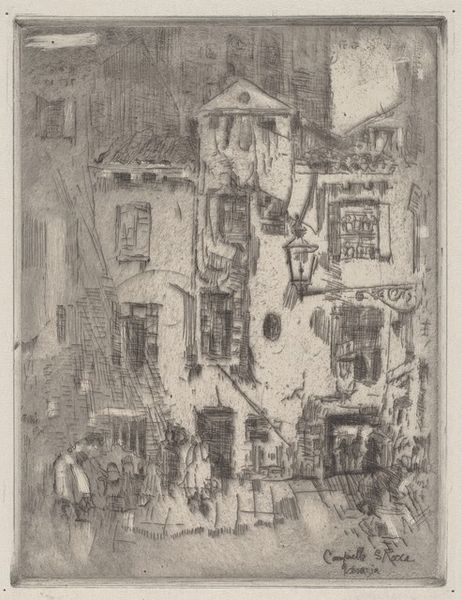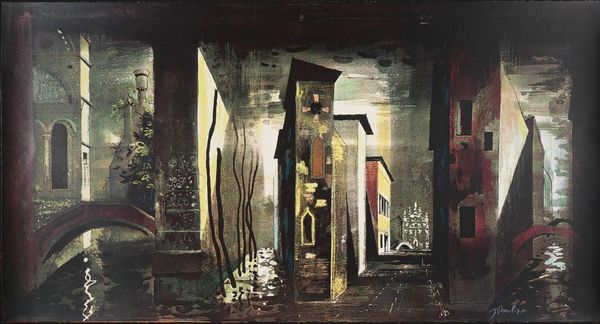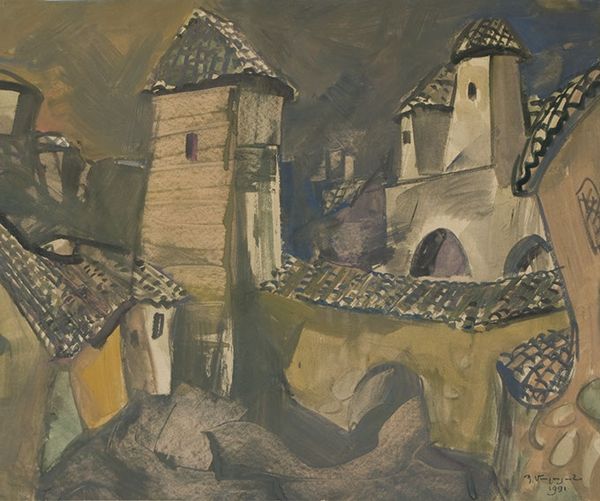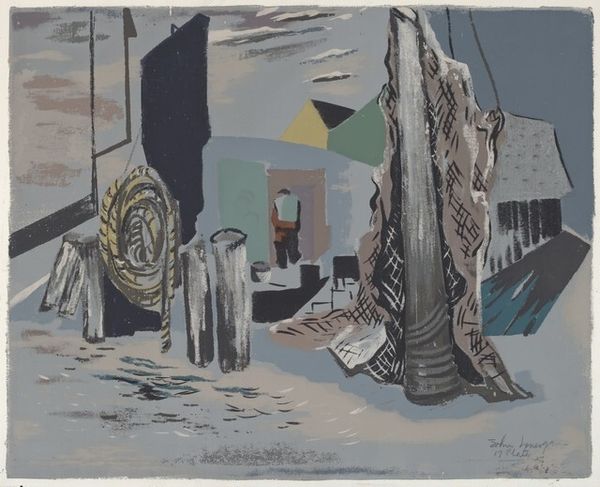
Dimensions: support: 425 x 559 mm frame: 615 x 745 x 25 mm
Copyright: CC-BY-NC-ND 4.0 DEED, Photo: Tate
Editor: Here we have John Piper's "All Saints Chapel, Bath," from the Tate Collection. It looks like watercolor and ink on paper. The mood is somber, almost ruinous. What can you tell me about it? Curator: Notice how Piper uses the materiality of watercolor—its fluidity and unpredictability—to depict architectural decay. This chapel isn’t just a building; it's a site of labor, a repository of social values crumbling before our eyes. Editor: So, it's not just about the pretty gothic details? Curator: Precisely. Consider the process: the quick, gestural marks suggest a rapid transformation, maybe even violent destruction. What was once solid is now debris, reflecting a changing landscape of belief and production. Editor: I see what you mean. It makes me think about the cost of progress. Curator: Indeed. Piper’s work encourages us to question what we build, what we value, and what gets left behind in the process.
Comments
tate 8 months ago
⋮
http://www.tate.org.uk/art/artworks/piper-all-saints-chapel-bath-n05719
Join the conversation
Join millions of artists and users on Artera today and experience the ultimate creative platform.
tate 8 months ago
⋮
Piper already had a reputation as a painter of historic architecture, in particular of ruined buildings, when he was commissioned to record war damage. He had painted in Bristol and the Houses of Parliament when Bath was bombed on the nights of 25, 26 and 27 April 1942 in some of the first ‘Baedeker raids’, so called because the targets were cultural rather than strategic and said to be selected from the pre-war Baedeker guide books. Piper went quickly to Bath when, he recorded, the ‘ruins were still smouldering and bodies being dug out.’ Gallery label, May 2007
